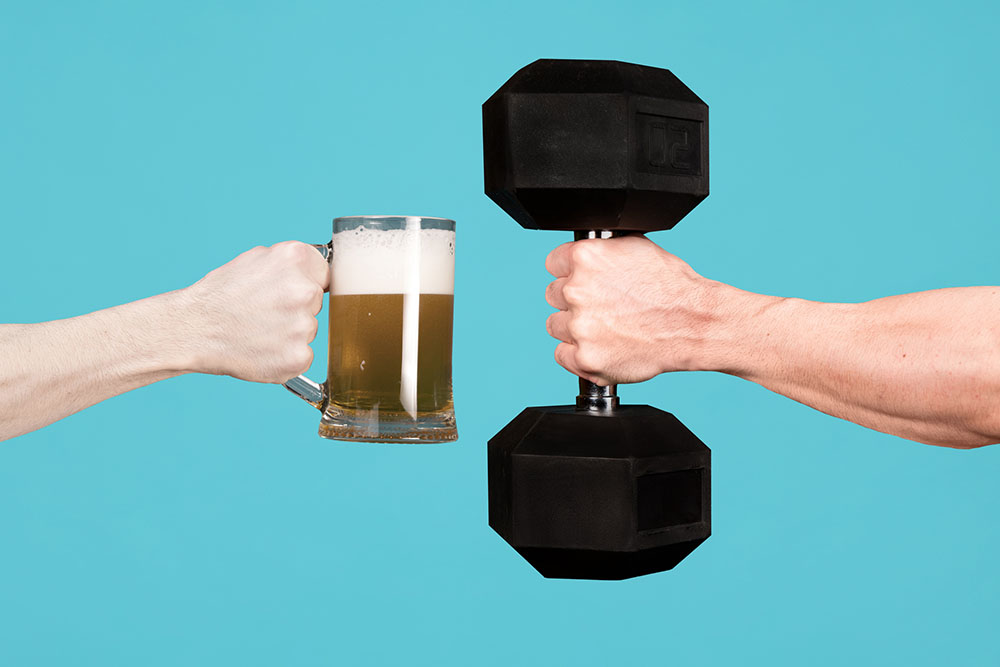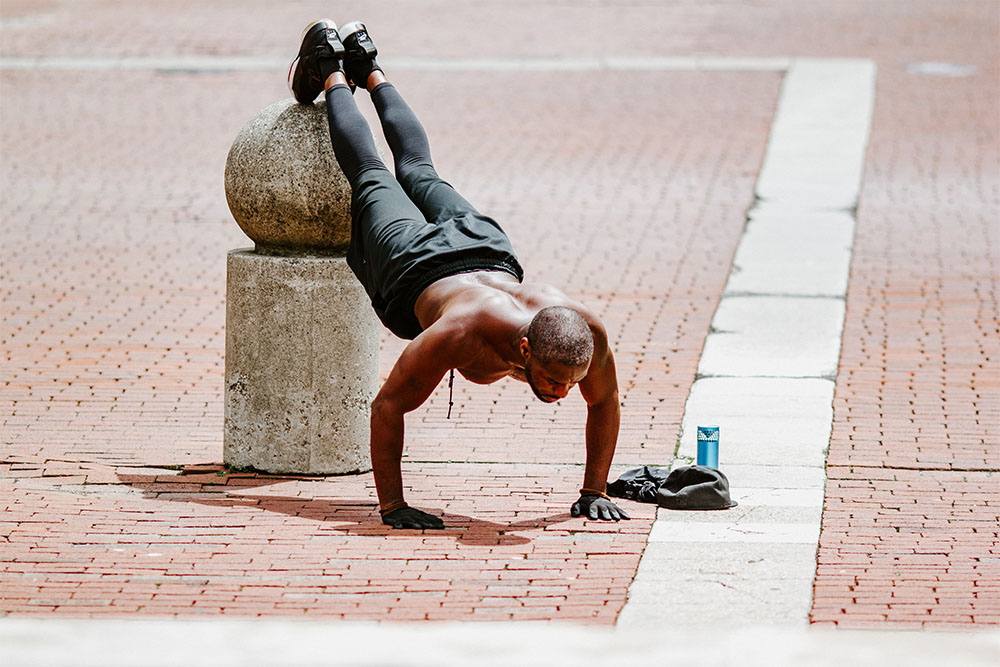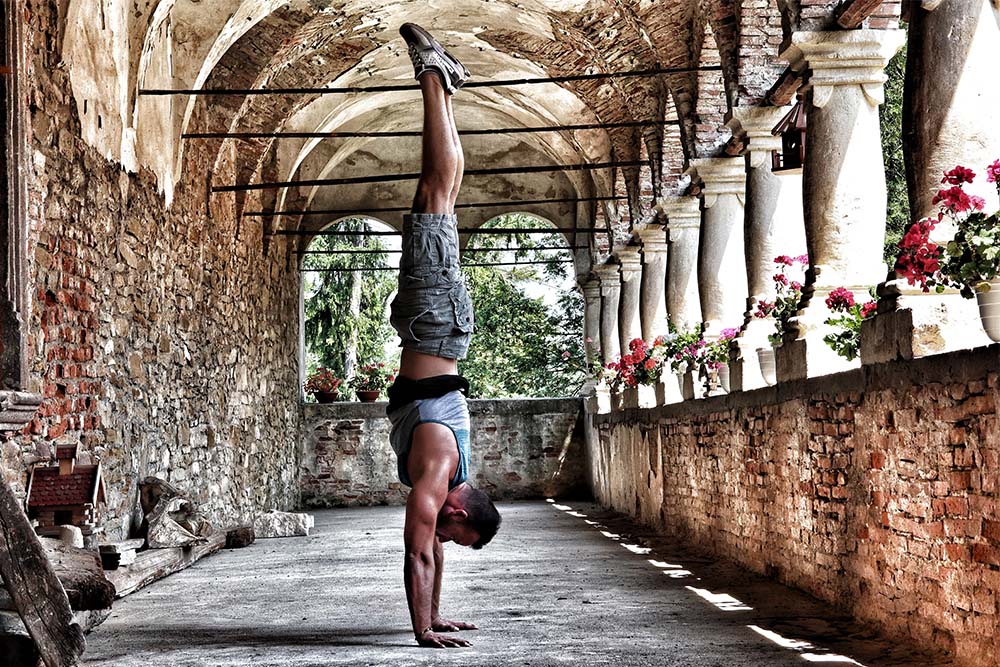Habit Stacking: How to Build Exercise Habits

Changing your routine to adopt better lifestyle behaviours can have a profound impact on your health and fitness.
It is also something that most people find extremely difficult.
Which is why we are always on the lookout for useful methods that can improve motivation and make the process easier – like habit stacking, for example…
The Neuroscience of habits
In 2007 some interesting research demonstrated that adults actually have less neurons than newborn babies – about 40% less, to be exact (Abitz 2007).
At the time this was an extremely interesting finding, because we would assume that adults (who are typically much smarter than babies… most of the time, anyway) would have more neurons than their newborn counterparts.
But there is a reason for this – a phenomenon known as synaptic pruning (Hong 2016).
A synapse describes one of the many connections between the neurons of your brain. And it appears that your brain removes (or “prunes”) connections between neurons that do not get used all that often.
Conversely, it appears to strengthen those that get used on a regular basis.
Now, this obviously explains why adults typically have less neurons than babies – because they have pruned them away.
But more than that, this interesting concept can also help us build new habits through the process of habit stacking.
What is habit stacking?
Habit stacking can be described as the process of stacking a new behaviour on top of an existing one – or “stacking” a new habit with an old habit.
We know synapses get stronger with every habit you build. And the more ingrained a habit is, the stronger the neurons that underpin it are.
As such, you can use these well-developed neurons to create new habits and build new connections in your brain easily and effectively.
For example, you might have a strong habit to brush your teeth before bed each night or turn the coffee machine on when you wake up in the morning – and you can use these ingrained habits to your advantage to improve the uptake of new health behaviours.
Benefits of Habit Stacking
In case you had not picked up on it already, the primary benefit of habit stacking is that it makes developing new habits easier.
In short, by attaching a new habit to an old one, it becomes less challenging. You face less resistance when trying to adopt that new habit, which means you are more likely to do it.
This can help you achieve your health and nutrition goals, leading to real lifestyle change.
Habit stacking examples
Habit guru James Clear (the author of the book “Atomic Habits”) explains that habit stacking can be described in a very simple formula:
After/Before [Current habit], I will [Insert new habit here]
To provide a couple of examples:
- Before I make my coffee in the morning, I will go for a 15-minute walk
- After I brush my teeth in the morning, I will meditate for 5 minutes
- After I take off my work boots, I will jump straight into my workout clothes
Considering these, you can clearly see how we can attach a new behaviour to an old habit to improve its uptake.
And because your current habits are already ingrained into your brain, and are therefore easy, stacking them with new behaviours makes it so much more likely that they will become permanent.
Importantly, once you feel like you have that one new behaviour down pat, you can easily begin to stack habits on top of one another to develop further health behaviours.
Again, using the examples above:
- Before I make my coffee in the morning, I will go for a 15-minute walk, then do 5 minutes of stretching
- After I brush my teeth in the morning, I will meditate for 5 minutes, then write down three things I am grateful for today
- After I take off my work boots, I will jump straight into my workout clothes, then head to the gym with a protein shake
Simple and effective.
How to habit stack exercise
How does this apply to exercise?
Research has shown that it can take anywhere between 18 and 254 days for a person to make a new habit completely automatic (i.e., performed without resistance) – with the average duration being around 60 days (Lally 2010).
Which means that creating a new habit is hard.
While habit stacking is indeed a powerful tool, it needs to be implemented effectively to work – and this largely comes down to a couple of factors.
Firstly, you need to select the right habit to build upon.
Habit stacking has a time and location built into it. This means that you want to couple your habits in logical locations.
For example, going for a run in the morning might not be suitable because if have to get up early and get your kids ready for school – but going for a run on the way home from dropping them off might be a good option.
With this in mind, think about when you are most likely to have success with your new behaviour, and then link it to a habit that is already established around that time.
A great way to make this work is to create a list of your current habits that you do every day, and the time that you do them. Then think of the new behaviours that you want and identify the time at which they will fit best into your schedule.
Then simply match the habit with the new behaviour, write it down somewhere important, and away you go.
Secondly, you should start small.
Many people fail to make a new habit stick because they bite off more than they can chew. Rather than selecting something small they can easily fit into their routine, they jump the gun and all out from the get-go – which is unrealistic.
This means that opting to go for three 20-minute runs per week is going to be much more manageable than running for an hour per day.
This isn’t to say that running an hour per day isn’t something you should strive for, but rather that it is something that you should build up to over time, rather than jump straight into.
Related Article: Exercise Motivation to Prevent Age-Related Body Changes
What to do if you get off track?
Finally, we wanted to touch on what to do if you fall off the wagon.
Because it is likely to happen.
That’s the reason that so many people struggle to stick to a new habit – because they fail, and then never try again.
But it doesn’t have to be this way.
If you make a mistake and let your habit slip, following these steps is the key to turning things around.
- Accept it: these things are going to happen. As soon as you acknowledge that it is a mistake and not the end of the world, the sooner you can get back into it.
- Identify why it happened: did you bite off more than you can chew? Was it scheduled at a poor time? Was there some sort of life stress that made it more challenging?
- Address why it happened: once you have worked out why something occurred, you should fix it. Make a change that eliminates that barrier from derailing your progress again.
- Start again: and once that barrier has been removed, it is time to start over. And the sooner the better, at that.
- Expect to happen again: and lastly, expect it to happen again, and plan accordingly. Every time it happens is the chance to remove another barrier, making it more likely to stick next time.
And that’s it.
Forming new habits is hard (especially exercise habits and nutrition habits) – so don’t be hard on yourself when they fail.
Use it to learn, and then move on.
Take Home Message
Adopting healthy lifestyle behaviours is hard – but it doesn’t have to be.
By stacking new behaviours with previously formed habits (i.e., habit stacking), you can reduce the resistance to performing those new behaviours. This makes them easier to embed into your lifestyle, ensuring they become a consistent part of your routine.
So, what are you waiting for? Get habit stacking!
References
Abitz, Maja, et al. “Excess of neurons in the human newborn mediodorsal thalamus compared with that of the adult.” Cerebral Cortex 17.11 (2007): 2573-2578.
Hong, Soyon, Lasse Dissing-Olesen, and Beth Stevens. “New insights on the role of microglia in synaptic pruning in health and disease.” Current opinion in neurobiology 36 (2016): 128-134.
Lally, Phillippa, et al. “How are habits formed: Modelling habit formation in the real world.” European journal of social psychology 40.6 (2010): 998-1009.
You Might Like:
















